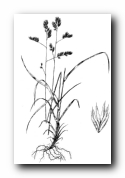
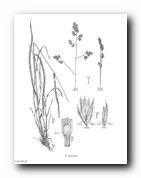
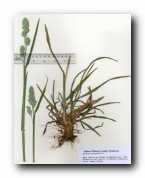
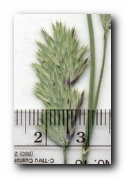
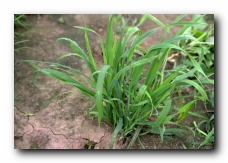
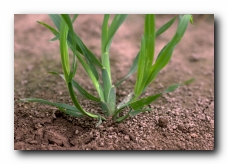
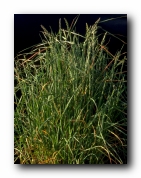
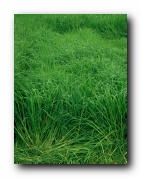
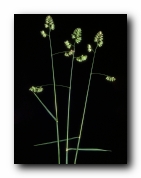
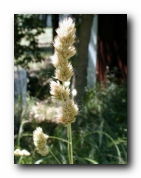
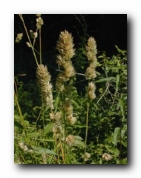
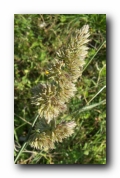
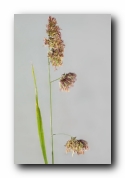
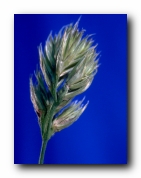
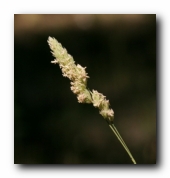
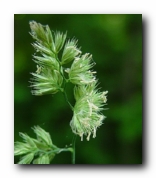
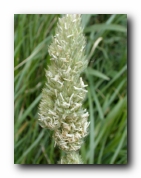
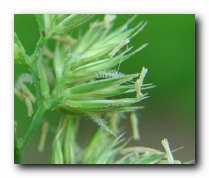
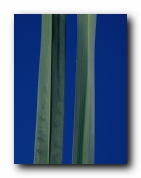
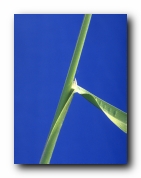
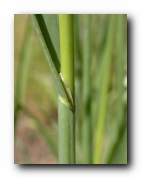
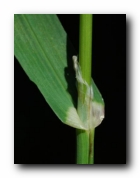
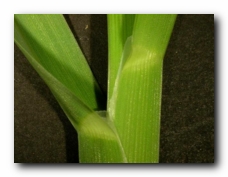
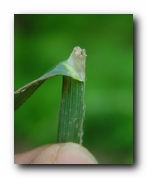
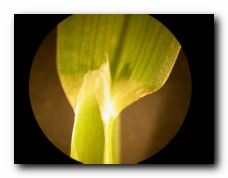
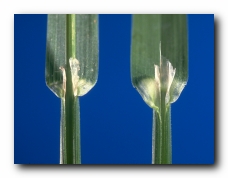
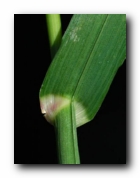
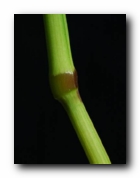
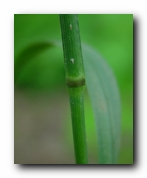
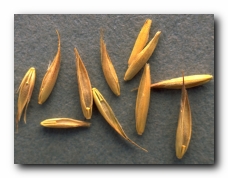
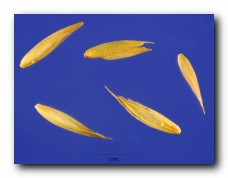
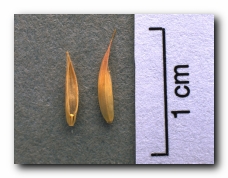
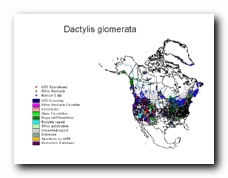
40" Rows:
Broadcast:
Loam:
Clay:
Low
High
Low
Habit: Tall perennials in large clumps, with creeping rhizomes.
Culms: 60-120 cm. tall, tufted, simple.
Blades: 7-25 cm. long, 2-8 mm. wide, long acuminate, flat, scabrous on
surfaces and margins.
Sheaths: Upper shorter than the internodes, lower longer, flattened,
smooth to rough.
Ligules: Membranous, 2-5 mm. long.
Inflorescence: Panicles 5-20 cm. long, contracted, with the spikelets crowded
at the ends of the few stiff branches in one-sided headlike clusters,
branches ascending or spreading in flower, contracted after flowering.
Spikelets: 5-9 mm. long, 2-5-flowered, crowded, compressed, nearly sessile
in dense fascicles, rachilla finally disarticulating between the florets.
Glumes: 1-3-nerved, acute often mucronate, the second the larger,
hispid ciliate on the keel.
Lemmas: 4-6 mm. long, about 5-nerved, compressed-keeled, pointed or
short-awned, more rigid than the glumes, more or less hispidulous,
ciliate on the keel.
Palea: Nearly as long as its lemma, 2-keeled.
Habitat: Fields, meadows, and waste places. May-June.
Use: Commonly cultivated as a meadow and pasture grass; of most
value in mid spring and in somewhat
shaded situations.
Synonyms: Dactylis glomerata L. ssp. glomerata
Dactylis glomerata L. var. ciliata Peterm.
Dactylis glomerata L. var. detonsa Fries
Dactylis glomerata L. var. vivipara Parl.
Special Notes:
Orchardgrass (Dactylis glomerata) Information #2
Orchardgrass (Dactylis glomerata) Information #3
Orchardgrass (Dactylis glomerata) Information #3